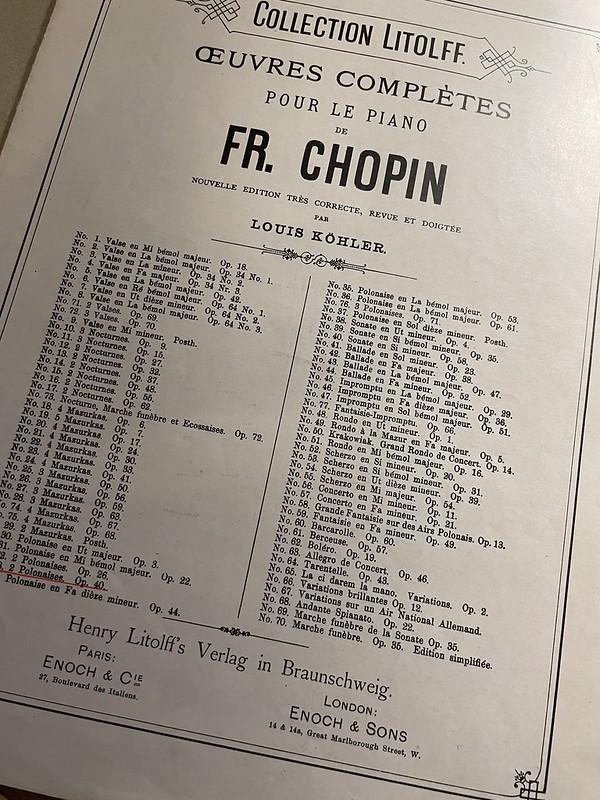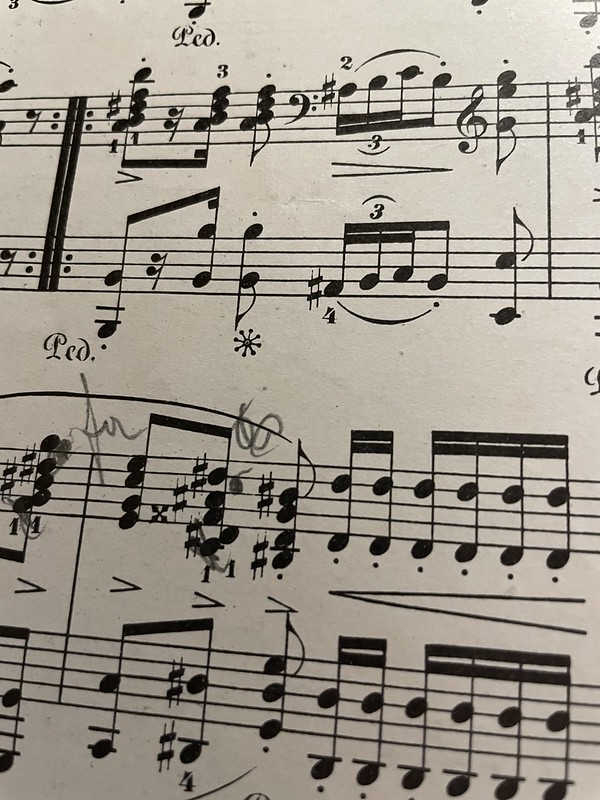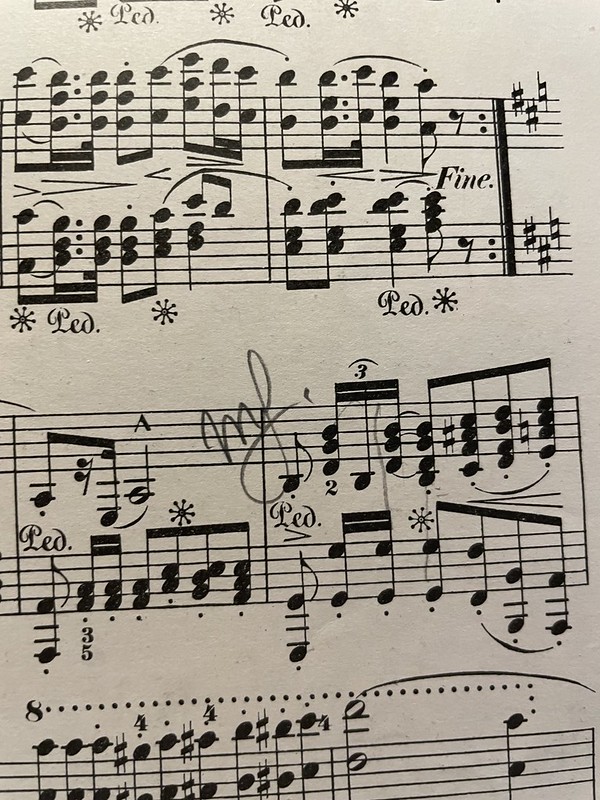Someone found some sheet music at a brocante a few weeks ago and picked up a couple of pieces for me. 2 Polonaises, Opus 40 was one of them.
I kind of like that the editor was Henry Litolff. But that’s by away of an aside.
ON a separate but related note, lately, I have been fighting an internal battle on the question of markings. Fingerings. Emphasises and things like this. Basically, when I was a child doing RIAM exams, there was a painful experience of many months attempting to decipher a piece of music, convert it into something remotely recognisable. My piano teacher had a pencil, and what I considered old lady handwriting at the time. My exam books tended to get covered in pencil markings around fingerings and the notes that I consistently misread, and much more than anything, the dynamic markings. A week before the exam, an eraser was carefully applied and the markings all removed. To this day, I hate marking sheet music with any markings at all. This, from what I can see is completely counter to the practices I see around the internet. I sat through practice planning with ToneBase lately and someone noted that of course you should keep your markings, why would you DO all that work and not be able to access it if you set the piece aside and wanted to come back to it months or even years later.
I see the logic. But I don’t want to write on it so my markings tend to go on my digital copies of the music on my iPad. And I am clearly just not used to it.
What does this have to do with Chopin? Well, when I opened the sheet music pictured above, I see the markings. They are (this is awfully familiary) in pencil. And I can only read some of them.
There are definitely far fewer markings than was on my K545 back in the day. I’ve never tried this. I should.
From what I can see, the person who used this before I got my hands on it only played No 1. There are no markings on No 2.
I’ve found that between this and the couple of second hand sheets I bought myself lately (Hummel and Guastevino amongst other things), I’m starting to get fascinated by it. I’d love to know about more second hand sheet music shops.
Here’s a video of the piece




